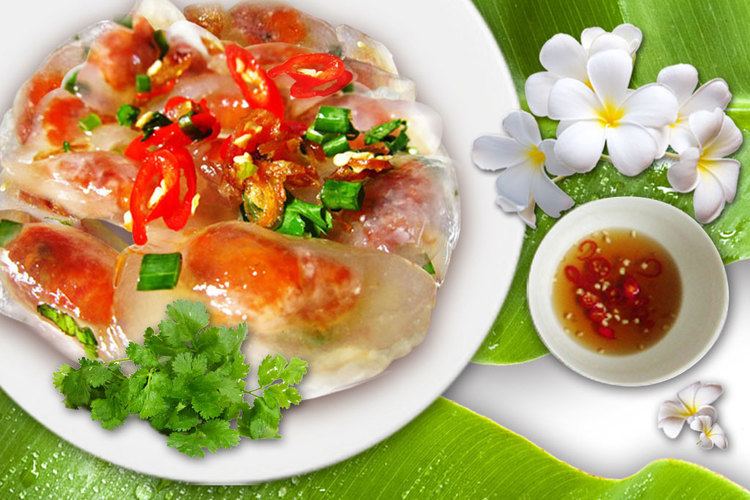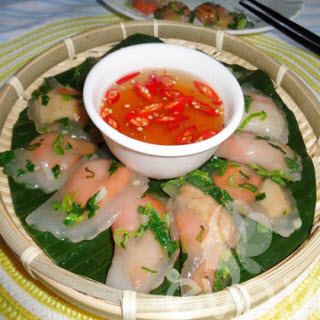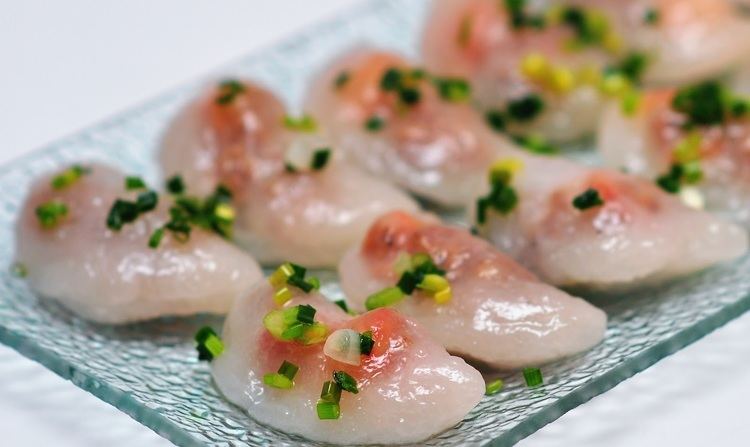Region or state Central Vietnam (Huế) | ||
 | ||
Main ingredients Tapioca, Shrimp and prawn as food, Pork belly Similar Bánh canh, Bún bò Huế, Bánh, Bánh cuốn, Nem | ||
B nh b t l c vietnamese clear shrimp pork dumpling
Bánh bột lọc is a small, clear-looking, chewy tapioca dumpling in Vietnamese cuisine that can be eaten as appetizers or small snacks. They are usually filled with shrimp and pork belly, often being topped with fried shallots and served with sweet chili fish sauce. It is said to have originated from Huế, as the city was once the imperial capital of the Nguyễn dynasty and known for having simple, yet sophisticated dishes.
Contents
- B nh b t l c vietnamese clear shrimp pork dumpling
- B nh b t l c tr n xu n h ng
- Etymology
- Variation
- Production
- Health concerns
- References

B nh b t l c tr n xu n h ng
Etymology

The dish's name is believed to have come from its clear, dumpling-like appearance, as the term bánh bột lọc loosely translates to "clear flour cake." In Vietnamese, the word bánh can mean "cake" or "bread," but can also be used as a general term for foods that are made from any type of flour, the most common being rice or tapioca. Bột literally means flour, although it does not specify the type, and lọc means "refine" or "clarify."
Variation

Bánh bột lọc can either be steamed or boiled and wrapped with or without banana leaf. With the banana leaf wrapping, it is called bánh bột lọc lá, meaning "clear flour cake with leaf." Without the banana leaf wrapping, it is called bánh bột lọc trần, meaning "clear flour cake bare." The filling is traditionally a whole grilled shrimp with the shell on and a slice of pork belly, but variations have had the filling be shrimp without the shell, no pork belly, ground pork, mushrooms, and onions. In addition to tapioca flour, corn starch and rice flour have also been known to be added in the making the translucent wrapper.
Production

Bánh bột lọc trần is made by adding boiling water with tapioca starch, then mixing and kneading until a smooth, soft, and elastic dough is formed. The dough is then divided into small balls and flattened, where the filling is placed in the middle. The dough gets folded over the filling and the edges pinched together to seal the filling in and creating a dumpling shape. The dumplings are cooked in boiling water, then drained and rinsed with cold water. Making bánh bột lọc lá is similar to making bánh bột lọc trần. The dough is placed in blanched banana leaves, some filling is added in the center, and then some more dough is placed on top to cover the filling. The banana leaves are then wrapped tightly and tied together with small strands of banana leaf before being steamed. Regardless of the method, the dish can be frozen for later use.
Health concerns
It should be noted that tapioca starch is made from cassava root. If prepared incorrectly, cassava root can be highly toxic as it naturally contains linamarin, a cyanogenic glycoside, which upon ingestion will release cyanide in the gut. Prolonged ingestion can result in acute cyanide poisoning, a goiter, spastic paraparesis, or ataxic neuropathy.
